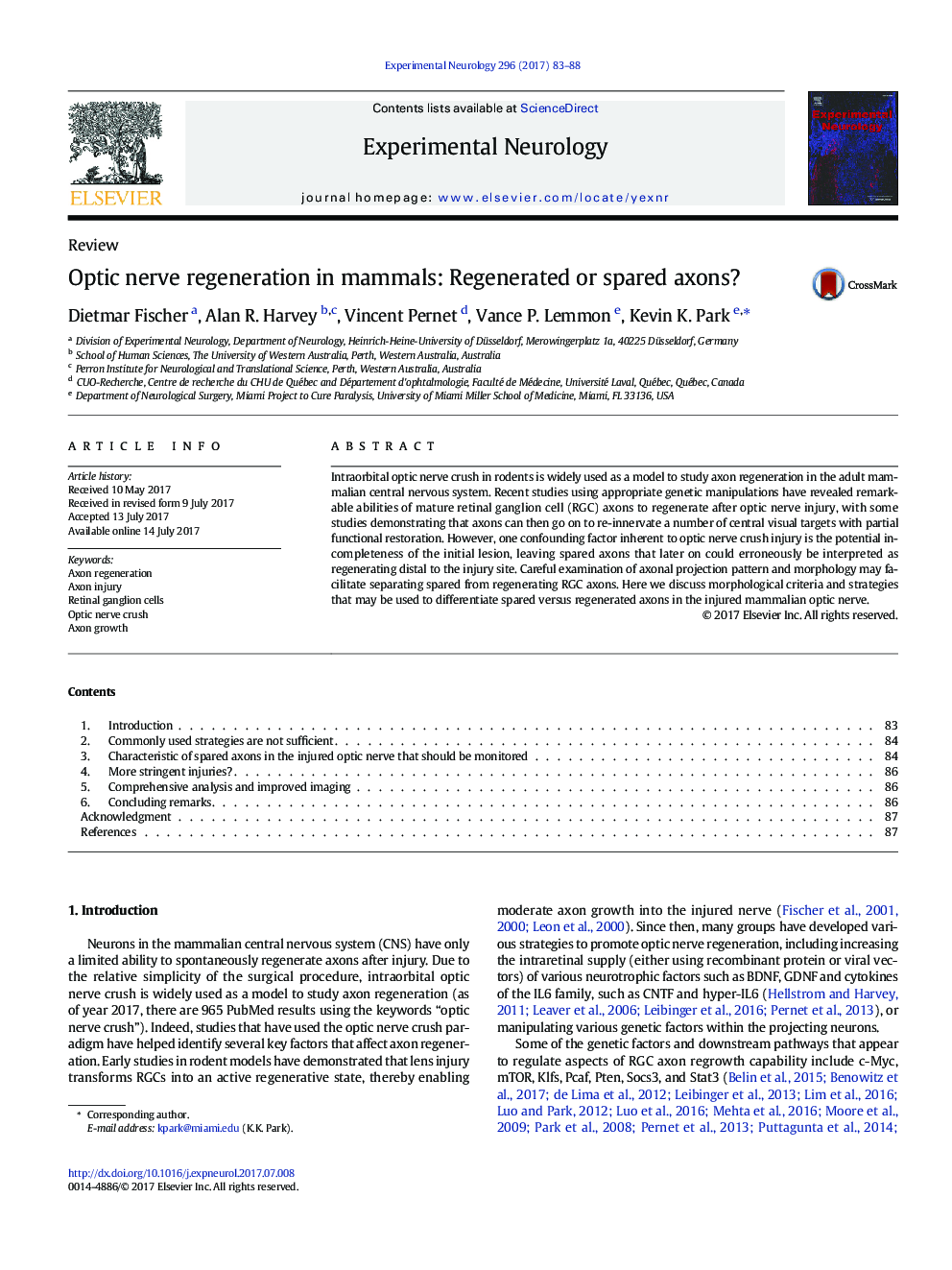| Article ID | Journal | Published Year | Pages | File Type |
|---|---|---|---|---|
| 5629129 | Experimental Neurology | 2017 | 6 Pages |
Intraorbital optic nerve crush in rodents is widely used as a model to study axon regeneration in the adult mammalian central nervous system. Recent studies using appropriate genetic manipulations have revealed remarkable abilities of mature retinal ganglion cell (RGC) axons to regenerate after optic nerve injury, with some studies demonstrating that axons can then go on to re-innervate a number of central visual targets with partial functional restoration. However, one confounding factor inherent to optic nerve crush injury is the potential incompleteness of the initial lesion, leaving spared axons that later on could erroneously be interpreted as regenerating distal to the injury site. Careful examination of axonal projection pattern and morphology may facilitate separating spared from regenerating RGC axons. Here we discuss morphological criteria and strategies that may be used to differentiate spared versus regenerated axons in the injured mammalian optic nerve.
